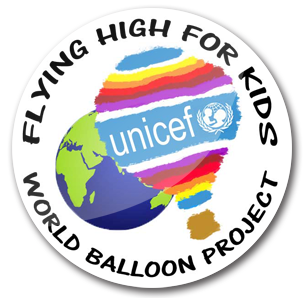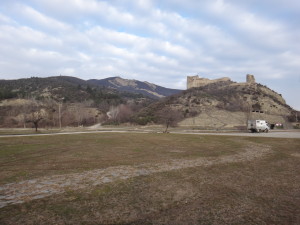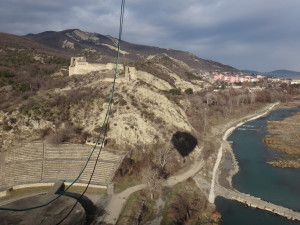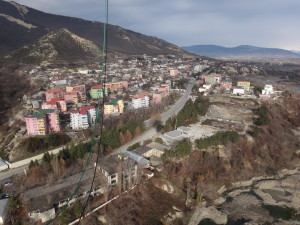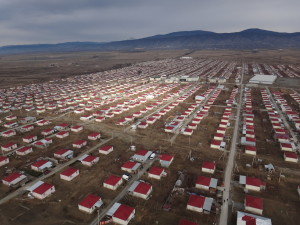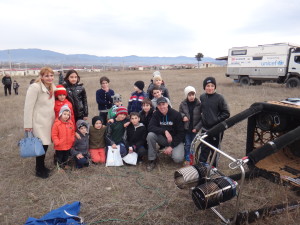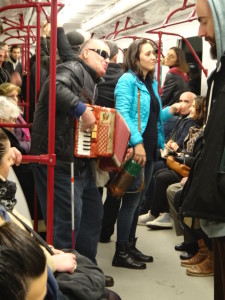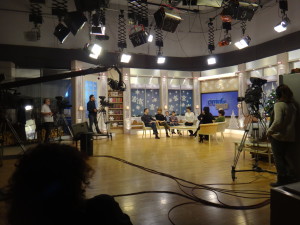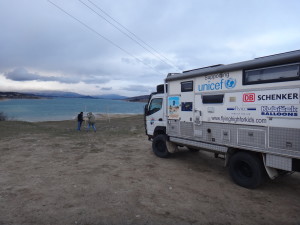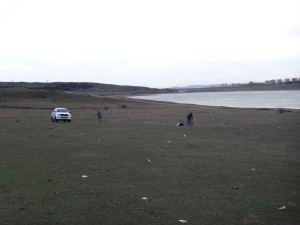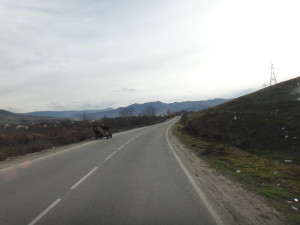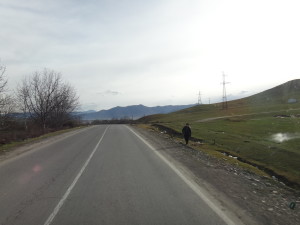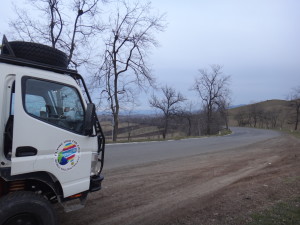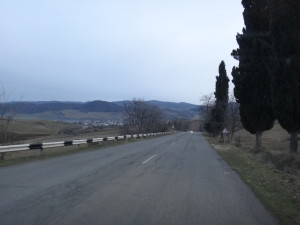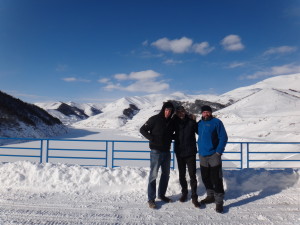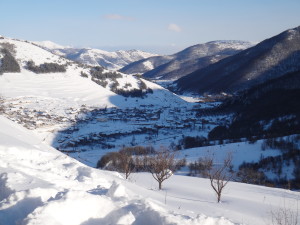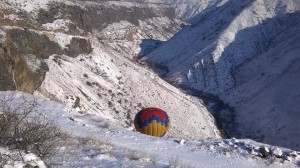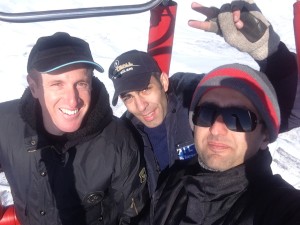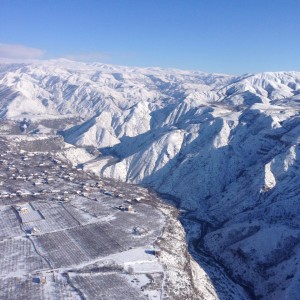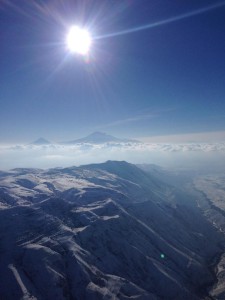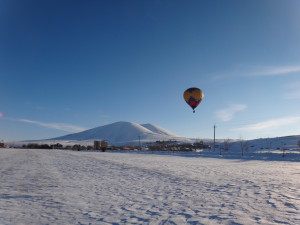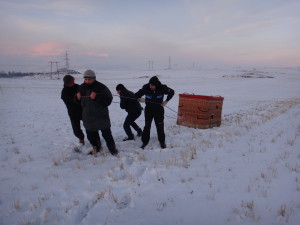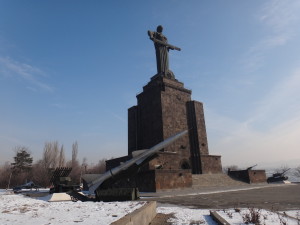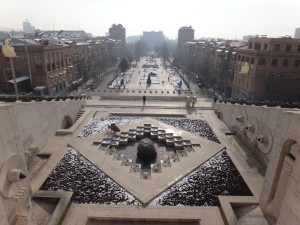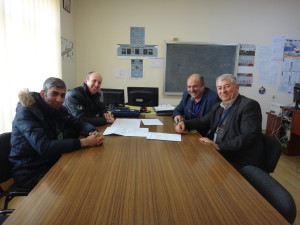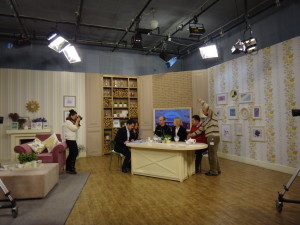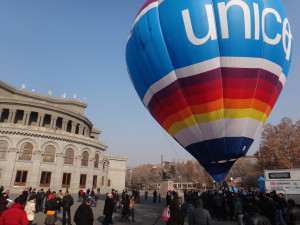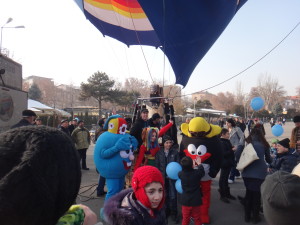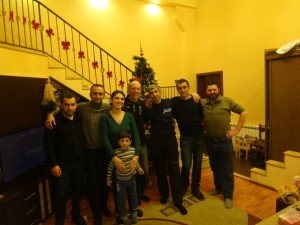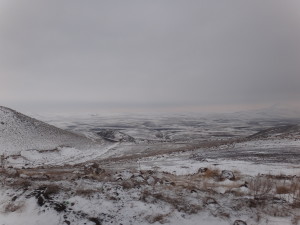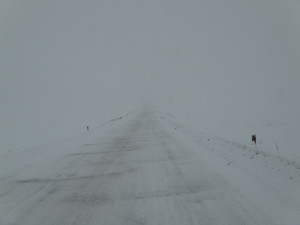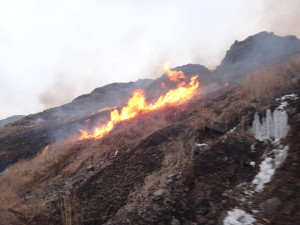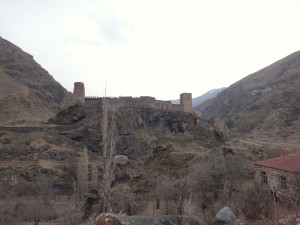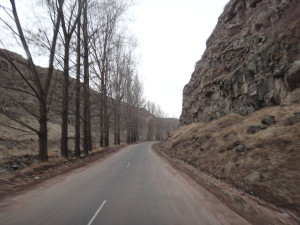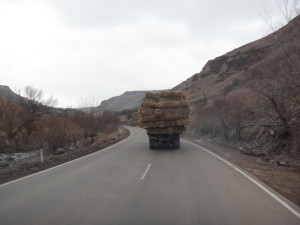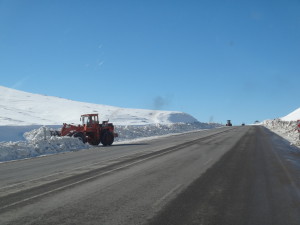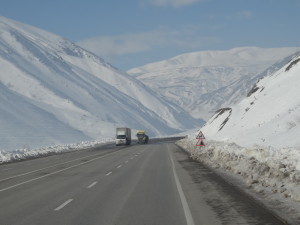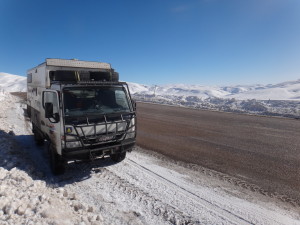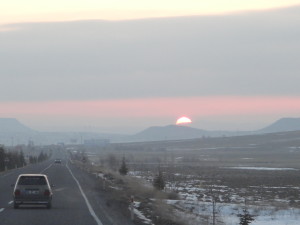Georgia, Armenia, Turkey
Thousands Of Happy Kids
January 4, 2015Lots More Adventures To Come
March 6, 2015We drove to the historic town of Mtskheta, just outside of Tbilisi, as the sun was rising. An event had been arranged there with UNICEF Georgia.
On arrival, I scouted the area for a good place to inflate the balloon, checked maps and the wind direction. Luckily for us, the direction of the wind was perfect for flying. Almost every other direction would’ve made flying very complicated. Balloons can’t be steered and are completely reliant on the wind.
Media arrived and I had a few interviews with them. Children came soon after to see the balloon fly. There were also a group of adults with special needs who came to watch.
As it was the Georgian Christmas a couple of days later, we shared gifts with the kids. I also gave postcards to them from children in Mongolia. After answering their questions, we started to inflate the balloon.
I got the final clearance from Tbilisi Airport and took off with a cameraman on board.
We flew over the ruins of a very old castle and along a beautiful valley with a river flowing through it. My plan was to fly out of the valley and into the next one, where there were large fields to land in. We could see Tbilisi in the distance and there were mountains all around. Georgia is a very mountainous country.
After around 40mins I landed next to a refugee camp. The camp was made for refugees displaced by the Georgian/Russian fighting in 2008. There were rows and rows of houses which all looked the same. We were greeted by a number of kids who came out from the settlement. Funnily, there was a cow which also seemed happy to see us; it ran over to get a closer look. We gave the kids gifts, which they were very happy about.
We packed the balloon with the help of a farmer and some local crew, (arranged by my friend who owns the local balloon company, Sky Travel). I had a couple of more media interviews and we were on our way feeling content with how everything went.
An interview on a popular Georgian TV show had been arranged for the next day. I took the metro and walked a further three kilometres to the TV station. I had to have make-up done so I didn’t blind the viewers with my bald head.
A number of kids from the balloon flight the day before came and were going on the show with me.
Our turn came. I had an ear piece so a translator could translate for me. It was a bit difficult to hear, but I think I answered the questions properly. The kids were drawing pictures on the floor in front of us and were also asked questions. It was a good idea to have them and the kids were excited to have the chance to be on TV.
The interview went for about 15 minutes and it turned out well I think.
The following morning I met with my Georgian friend, Revaz, who owns the local balloon company and had arranged the flight permission. It was good to have a catch up as the last time I had seen him was in Russia 10 years ago.
That afternoon, I had one last media interview. A camera crew came to the hotel and we went to a nearby lake to shoot some scenes of me driving the truck around and answering questions about the project. They were good to work with and it was fun to do.
We left our friendly hosts at the Eurasia Hotel the next morning and took the truck to a workshop to get some welding done. Des had spotted some cracks in the front part of the chassis a few days before which needed seeing to.
We spent a few hours there while it was fixed, then left Tbilisi in the early afternoon with an aim to get to Yerevan, Armenia by the end of the day, (280kms away).
It was an easy drive to the Georgian border. We were through the Georgian border in no time at all. Georgian border crossings are by far the easiest out of the countries we’ve been to so far.
We had to apply for our Armenian visas on the Armenian side. They only accepted Armenian Dram as payment, so we handed in our passports and walked to the ATM on the other side of the border. We withdrew money and went back to get our visas. I also had to go to Armenian Customs to do the temporary importation paperwork for the truck. It was straightforward and they were surprised to see two New Zealanders with an Australian truck coming through.
The last thing to do was buy insurance. The office was run by young guys who loved to smoke, their office was full of it. It seems to be compulsory for all Armenian males to smoke; there are not many who don’t.
The whole process took around an hour and we were on our way again.
The area became mountainous with some big climbs. According to the GPS, the road crossed into Azerbaijan a few times, which seemed a bit strange. Azerbaijan and Armenia are still technically at war, just a few days before there had been a flare up on the border in the south of the country.
The road was good, but it seemed there was a lot more up than down. There were some 2000m high mountains to cross. We ran into snow after it turned dark. There had been a big dumping of snow the day before and it was still snowing as we climbed up the largest mountain on the route. The steep, windy road was completely covered in snow and hadn’t been cleared very well. I was beginning to wonder whether it was a good idea to continue. We pushed on and eventually made it to the top. Maybe it was a good idea it was dark and we couldn’t see the drop below.
It was a long descent to Sevan Lake and further to Yerevan. We reached Yerevan at around 9pm and found our hosts’ house, Nairi and his family. He is one of only two balloon pilots in Armenia and owns the only balloon there.
I was introduced to him by email a month earlier and he kindly invited Des and I to stay with them for the duration of our visit to Yerevan. We had an enjoyable dinner that night.
Nairi had to go to a meeting at a hotel in the mountains the next day, so Des and I tagged along. It was a stunning day and the fresh snow on the mountains made it look extra spectacular. We had lunch at the hotel and looked for a place to inflate Nairi’s balloon for a possible future visit. We spent a few hours enjoying the views. The temperature was -13deg, but with bright sun and little wind, it didn’t feel like it.
We made our way back to Yerevan mid afternoon.
As the weather was so good the next day, Nairi invited us to go ballooning with his friend, (the only other balloon pilot in Armenia, David). He said there was a beautiful town called Garni and he would like to fly there.
We refuelled the balloon, picked up the ground crew and made our way to Garni, around 40kms from Yerevan. The area is well known for the only Hellenic Temple left in Armenia. It was built in the 1st Century.
There is a big canyon with beautiful cliffs we wanted to fly in. Once there, we checked the weather and found a place to take off. After a quick set up, Nairi, David and I took off in their balloon. It was a good opportunity for me to give them a few pointers about flying as they are new pilots.
We got to the edge of the canyon and managed to fly along the side of it. We couldn’t go down too far into it as the wind kept pushing us out. We had fun working our way along the canyon. We then decided to go up to catch another wind direction going the opposite way. We could see Mt Ararat in Turkey, and Yerevan in the distance. The view of all the snowy mountains was spectacular.
We flew right over our ground crew and looked for a place to land. I was setting Nairi and David a few challenges to improve their pilot skills. We landed on the road in a very good place and our crew arrived a minute later. It would’ve been difficult to retrieve us in a field as there was a lot of snow and the car wouldn’t be able to get to us.
A number of locals came to see what was going on and offered to help us pack up.
We had a delicious meal at a local restaurant after and toasted to our beautiful flight.
We went ballooning again the next day, though David and I stayed on the ground, Nairi had a couple of passengers to fly. The wind was moving quickly aloft, around 50km/h, so we had to drive quite fast to stay with him. Luckily the direction of the wind was along the main highway, so it wasn’t too difficult. We were there at landing. It was a fast landing and Nairi did a good job of landing it. The only problem was we couldn’t get the car to the balloon as it was in a field with deep snow, so we had to pull everything out by hand. We must’ve looked like an untrained pack of sledge dogs as six of us pulled the basket to the car by rope. It was very good exercise.
Nairi and I met with UNICEF Armenia the next day to go over event plans. We met the Communications team and the country representative. All seemed to be on track and I spent the rest of the day at Nairi’s office working on my computer.
I went for a walk around Yerevan the following day. It is a beautiful city. I didn’t know much about Armenia before going there and was only impressed by it. I had an enjoyable day walking around the central city and some of the suburbs. It takes the record for most number of sculptures out of the countries we’ve been to so far, they are everywhere!
I headed back to Nairi’s office at around 4pm, and he took Des and I to the famous Ararat Brandy distillery. We had an interesting tour around the facility and got to sample a couple at the end. Their brandy is famous around the world.
The next day was spent at the office making sure all was in order for our event the following day. Nairi, David and I went to the airport in the afternoon to be briefed by the Armenian Civil Aviation Authority about flight rules. I was told to not fly close to the Turkish and Azerbaijan borders, or the nuclear power station, otherwise I risked being shot down. They said it in the nicest possible way though. They were very helpful and gave me maps and introduced me to the head air traffic controller. It was good of all of them to meet me to discuss any concerns I might have.
The next day I went to the UNICEF office at 10am to go for a live interview on a popular Armenian morning TV show. We drove to the TV station and arrived about 20mins before we were due to go on. I needed to go for make-up again, (I can’t say it is my favourite thing to do) and we went on-air just after 11am with UNICEF Armenia’s Representative. The interview went for around 10mins and we were happy with how it went.
I was dropped off at Nairi’s office after, before going back to his apartment to get ready. Des was there and had been trying to start the truck, but it wouldn’t go. We attached it to Nairi’s car and roll-started it. It started without a problem. (Des found later that one of the battery terminals was loose, so there wasn’t enough power going to the starter motor to start it. Luckily it wasn’t too difficult to fix).
We travelled to freedom Square, where the event was being held. UNICEF staff were all ready there and setting up. A good number of children arrived soon after and entertainment had been arranged for them. They also got a gift pack each.
We shared postcards, and then started to inflate the balloon. I kept the balloon up for the kids to see and take pictures of. Just before we were going to take off we were called and asked not to take off. Basically, one of the agencies who had given approval shouldn’t have because it needed more approvals within their agency. Nairi tried to make a few calls to sort it out. It was a little frustrating because we had all the approvals, but someone hadn’t done their job correctly within one of the agencies. When it became apparent not much could be done about it, we decided to tether at the square for a couple of hours. It attracted a good crowd and everyone was happy with how it went.
We had a celebratory dinner that night with Nairi and his family and friends. Armenian hospitality has been the best we’ve had so far. Nothing is too much trouble.
We left the next morning and made our way to the Georgian border. The road is good, but has a speed limit of 50km/h. I got pulled over by the police for speeding, which is ironic because we hardly went over 50km/h all day as there were so many hills. I paid my first ever fine, (around $US60) and was free to go. We’ve been lucky given the number of times we’ve been stopped by police across Central Asia.
The closer we got to the Georgian border, the more snow there was. It was impressive as there was white all around from the low cloud and snow on the ground. It looked like we were driving into nothing.
The border appeared and we crossed without too many hassles. The Georgian side was still under construction, so we drove through the new building to the old buildings on the other side. They had a quick look in the truck, registered it in their computer, stamped our passports and we were on our way.
We stopped at a restaurant in a small town for lunch and I spoke to some of the local guys sitting at the table next to us about how the road was ahead. I was showing them the map, but they didn’t seem to know where we were. Where they were pointing was in Turkey, even though I was showing them where we were!
Snow became less and less as we travelled on a long descent through a beautiful valley with old ruins of castles. The farmers were burning grass off next to the road. I had my window down as we went past one of them and the heat was intense.
After travelling around 100kms through the mountains, we reached the Turkish border. There is no border between Armenia and Turkey as technically, they too are still at war, (though nowhere near as bad as the issues Armenia have with Azerbaijan).
We filled up with fuel just before the border, (Turkish fuel is the 2nd most expensive in the world) and crossed the Georgian side of the border in about 10mins.
The Turkish side was a bit more complicated, but not bad. Most of the time was spent buying insurance. The border guards were very friendly.
It was dark by the time we left the border. We were warned by one of the police on our way out that if we don’t make it over the mountains, to call 156. We were wondering what might be ahead of us.
The road was up and down for 20kms or so, and then we found out what the policeman was talking about. The climb seemed to go on and on and we met snow again. The road was steep and windy. I looked on a map later and the overall climb was 1500m, from an altitude of 1000m to 2500m.
The weather towards the top was atrocious, windy and snowy. The road was narrow and slippery. Two trucks had come to a stop towards the top. They may have spun out as they were empty and had no weight on their driving wheels.
I took it very carefully. Again it was maybe lucky we were travelling in the dark, because I think there were very big drops in parts. It isn’t a good combination with a narrow, windy and icy road.
We eventually reached a four lane highway and made better headway, though the road was still icy. We parked up in a small town just after the city of Kars. We had spent 14hrs on the road that day. We had gained two hours crossing into Turkey and made the most of it.
It was an easy drive the next day. The road was four lanes the whole way to our destination of Urgup in the area of Kapadokya. The weather was beautiful and clear and we enjoyed the drive. Snow ploughs were busy on the mountain passes moving snow a couple of metres high in places. The road was clear of snow and ice luckily and they were just working on the snow banks.
It becomes less mountainous the further we went and the climbs and descents more gradual. The final 250kms from Sivas was relatively easy driving.
We arrived into Kapadokya just as the sun was setting. It was rather fitting as it marks the end of the Central Asian leg of the project. It has been an amazing journey so far with many unforgettable experiences.
Kapadokya feels like my second home. I worked there for two years flying balloons and know the place well. My Girlfriend also comes from there and was waiting for me.
My friend, Des, who has been travelling with me since Mongolia, will leave next week to travel around Europe, then back home to New Zealand. He has been my chief mechanic, crew, security and every other job I could find him. He has been great company and kept me on the road. I owe him big time.
I will be in Turkey for two months arranging the European leg of the project and arranging funding for it.
The running costs of the project are funded by me. If you like what I’m doing and would like to help out, you can donate on the ‘Donate’ page of this website.
For more information and photos, you can also ‘like’ us on Facebook: www.facebook.com/flyinghighforkidsproject
